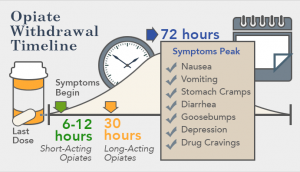Dilaudid Withdrawal & Detox

Dilaudid withdrawal and detox can be a difficult process for those who find themselves facing a drug addiction to the prescription narcotic and pain reliever Dilaudid. Despite the difficulty in dealing with Dilaudid withdrawal and detox, it is possible to have a perfectly successfully recovery from the addiction. Keep reading to find out more about what to expect while dealing with Dilaudid withdrawal symptoms and what takes place during the Dilaudid detox process.
What is the intended purpose of Dilaudid?
Dilaudid is a powerful prescription narcotic intended to be used as a pain medication for those who need moderate to severe pain management. Although Dilaudid, which is the brand name for Hydromorphone, is part of the opioid-based pain medicines like Morphine, it is about eight times more powerful. This is why while Morphine is used for pain management during major medical procedures, Dilaudid is used for long-term and/or severe cases of pain. Because the drug works by changing the way the Central Nervous System Receptors respond to pain, it can quickly cause the user to become addicted both physically and mentally to the effects of the drug. This is why medical professionals often slowly wean the patient from the drug and avoid using it long term in order to prevent drug addiction and abuse of the medication.
However, the extended release tablet form of Dilaudid is known for being used recreationally because of the increased high it gives its user. However, because of the heavy dose of the pain medication in the extended-release tablet, there are many risks involved in snorting the drug or taking it intravenously. Overdose and death can and have occurred in relation to abuse of Dilaudid.
Dilaudid Withdrawal Symptoms:
It can take as little as two to three weeks to become addicted to Dilaudid. This is why it is important to take the drug exactly as prescribed under the direction of a medical professional. If you have found yourself suffering from an addiction to Dilaudid, whether by accident or through intentional abuse, withdrawal symptoms can occur if you attempt to suddenly stop using Dilaudid. Typically, doctors will gradually reduce the patient’s dosage as to try to ease the withdrawal symptoms. Those may include:
- Restlessness
- Cold/flu-like symptoms
- Backache
- Weakness
- Stomach cramps
- Difficulty falling and or staying asleep
- Loss of appetite
- Fast breathing or a fast heartbeat
While weaning from Dilaudid, if you experience any of the above symptoms for an extended period of time, or if symptoms worsen, it is recommended you contact your doctor right away. It is normal for withdrawal from Dilaudid to take up to about two weeks, but it depends on the severity of the addiction. Aside from physical symptoms, mental withdrawal symptoms can occur as well:
- Agitation
- Anxiety
- Depression
- Insomnia
What to expect during a Dilaudid Detox:
Depending on the severity of the addiction, your doctor may take several different routes to weaning you from the Dilaudid addiction. Some people are able to go through Dilaudid detox in an outpatient program with minimal medical monitoring. However, others may need constant medical supervision while the doctor works with the patient on a taper program. This helps the patient slowly wean from Dilaudid and eases the discomfort associated with withdrawal and detox symptoms.
Other options include using medications that can aid during withdrawal and detox including:
- Over-the-counter medications can be used in mild to moderate recovery cases to help ease symptoms like headache, muscle pain, nausea, etc.
- However, for some with more severe addictions, there are prescription drugs available to help with the withdrawal and detox process.
- Clonidine – this is a drug commonly used for withdrawal. It helps to reduce symptoms like anxiety, muscle aches, sweating and cramping.
- Buprenorphine – this drug helps with the detox process because it provides similar effects to Dilaudid and can help trick the body into feeling like it is still taking the drug. The doctor often starts on a low dose and then increases the dose for the first couple of days.
For those with a serious addiction to Dilaudid or have a past history of drug addiction and drug abuse, it is recommended to seek inpatient treatment to aid in the recovery from the addiction, as well as to help with the withdrawal and detox part of the process.
Sources:
Medlineplus.gov
Mayoclinic.org
Addictioncenter.com
americanaddictiocenters.org






